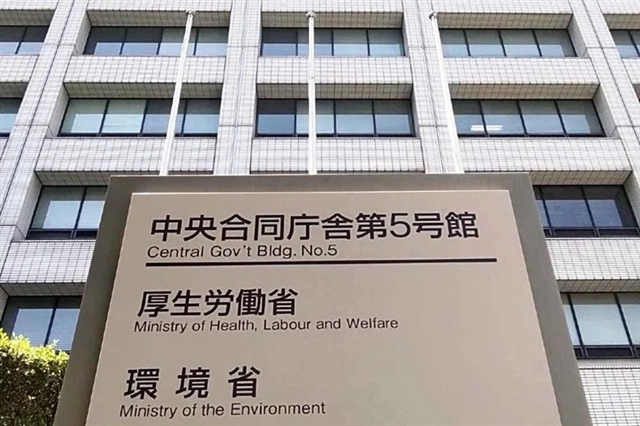 Opinion
Opinion

 |
| Dr Đồng Văn Hệ, Director of the National Coordinating Centre for Human Organ Transplantation and Deputy Director of Việt-Đức University Hospital. VNA/VNS Photo |
After nearly 20 years in effect, the Law on Donation, Procurement and Transplantation of Human Tissues and Organs, and donation and recovery of cadavers is being reviewed to better address current challenges.
Director of the National Coordinating Centre for Human Organ Transplantation and Deputy Director of Việt-Đức University Hospital Dr Đồng Văn Hệ told Nhân Dân (People) newspaper about three critical bottlenecks that must be resolved to prevent the loss of precious organ donations and offer more patients with life-threatening illnesses a chance of survival.
The law on Donation, Procurement and Transplantation of Human Tissues and Organs, and donation and recovery of cadavers has been in effect for almost two decades, yet many provisions no longer fit today’s realities. In your view, what are the biggest obstacles that need urgent reform?
This is a major issue and one that has troubled many of us for a long time. The current law was enacted in 2006 – almost 20 years ago.
International practice shows that legal frameworks should be reviewed and adjusted every five to ten years to keep pace with social and medical developments. The Ministry of Health has organised numerous workshops to assess the law’s strengths and shortcomings and to propose timely revisions.
In my view, three areas need urgent attention:
First, the current law does not permit organ or tissue donation from patients who have experienced cardiac death. This is already common practice in many countries to avoid wasting viable organs.
In reality, around 20–30 people in Việt Nam die each day because they cannot get a transplant. Allowing donations from cardiac death donors could save many more lives.
Countries and territories such as China, South Korea, Malaysia and Taiwan already allow this. Statistics show that the number of donations from brain-dead and cardiac-dead donors is roughly equal. In some European countries, such as Spain, cardiac-death donations even outnumber brain-death ones. Without this provision, we are effectively discarding half of our potential organ supply.
Second, the law does not allow brain-dead children to become donors. This is another major loss because many children suffer from severe conditions requiring transplants. For example, a child with heart disease cannot receive an adult heart due to size incompatibility. Allowing paediatric donations would give these children a much-needed lifeline.
Third, there is currently no financial mechanism to support organ donation and transplantation activities. Essential tasks such as counselling families of brain-dead patients, resuscitation and brain-death diagnosis, organ retrieval, transport and preservation still have no official funding. Without this, there are no resources to support the system or those who work within it.
Health insurance coverage for transplants is also limited, mostly covering only anti-rejection medication, while the cost of the surgery itself remains uncovered.
In reality, transplanting more patients would save money for the health system in the long run. For instance, a kidney failure patient who must undergo dialysis for life is far more costly to the insurance system than a patient who receives a kidney transplant and takes medication thereafter.
In the last three to four years, Việt Nam has performed over 1,000 transplants annually, yet there is still no formal financial framework for donation and transplantation activities. This is a serious shortcoming. The revised law must introduce transparent funding mechanisms to help the system grow sustainably and bring hope to more patients.
In Spain, every hospital with an intensive care unit has dedicated staff responsible for detecting potential organ donors in time. What about Việt Nam?
Over the past two years, Việt Nam has significantly changed its approach to promoting organ and tissue donation.
In late 2022, I had the opportunity to study Spain’s model as well as similar systems in other countries. Spain currently operates the world’s most successful organ donation and transplantation system, followed by the United States. In Asia, China, South Korea and Thailand are leading examples.
Thailand, for instance, performs fewer transplants than Việt Nam, yet its system for identifying and facilitating organ donation from brain-dead patients is far more advanced. To build a successful system, three key elements must be in place:
First, legislation must provide a strong foundation for a sustainable, well-developed system rather than simply supporting isolated cases or short-term campaigns.
Second, hospitals must take real ownership of the process of identifying and managing potential donors who are brain-dead or have experienced cardiac death. Since 2023, we have taken a much more proactive approach and seen significant progress. While the number of brain-death donations was fewer than 20 per year in 2022–2023, by 2024 it had risen to 41 cases, an increase of 173 per cent, placing Việt Nam among the fastest-growing countries in the world. As of August 7 this year, we have already recorded 49 brain-death donations, matching the total for all of last year and representing a 100 per cent increase.
Third, public support is essential. The entire process from donation, transplantation and coordination must be transparent and follow proper procedures to build trust. Every hospital must play a role in identifying and counselling potential donors; this cannot be left to just a few institutions.
The Ministry of Health has issued multiple directives on this matter. In other countries, organ donation coordinators are full-time, highly paid professionals. In Việt Nam, we still lack an equivalent mechanism. This is why we have adapted the Spanish model to restructure our system from the grassroots level.
On August 7, this model was piloted for the first time at a hospital in Vân Đồn, Quảng Ninh. At the provincial level, we began implementation two years ago and now have a network of 87 provincial hospitals in 47 out of 63 provinces and cities. However, many of these units are not yet operating as effectively as we hope, partly due to outdated legal provisions and the lack of financial mechanisms.
If the law is revised, building on this existing hospital network, each hospital adding just five to ten donors per year would dramatically increase the number of organs available for transplantation.
Given that organ allocation is a sensitive and scarce resource, what principles must be followed to ensure public trust?
Transparency, fairness and strict adherence to legal regulations are paramount. We strictly always follow these principles.
If the public perceives that the wealthy or powerful receive priority, trust in the system will collapse and donation rates will plummet. This is why every coordination activity at our centre is conducted in a transparent and standardised manner.
Regarding support for donor families, each country has its own approach. Some cover funeral costs or pre-transplant hospital fees. However, direct financial incentives can be problematic as they risk shifting the perception of donation toward material gain. Many countries have therefore returned to models that focus on funeral support and healthcare benefits.
In China, for example, children of brain-dead donors receive national scholarships until the age of 18. This is an approach worth studying, as it is humane, transparent and fair, while avoiding misunderstandings about financial motives.
Spain and the United States are leaders in sustaining organ donation funds. Is Việt Nam planning to establish such a fund?
Many countries have successfully set up government- or NGO-supported funds for organ donation and transplantation. Việt Nam would greatly benefit from a similar mechanism to provide transparent, structured support for donor families.
Such a fund could cover donation and transplant-related activities, including care, evaluation, logistics, ensuring that the system operates transparently, fairly and sustainably. Currently, salaries for professionals working in this field are modest despite the demanding and emotionally challenging nature of the work. In the long run, we must establish a clear financial framework.
Cost is another barrier. In many localities, when patients hear that transplants cost between VNĐ300–400 million or even up to VNĐ1 billion without full insurance coverage, they hesitate. Health insurance must play a larger role, with more reasonable cost-sharing mechanisms, to make transplants accessible.
Việt Nam already has several successful funds supporting healthcare and education. I hope that philanthropists who recognise the value of organ donation will step forward to support a national organ donation fund. A single brain-dead donor can save multiple lives, and donated tissues can improve the quality of life for hundreds of patients.
If such a fund is organised transparently, fairly and effectively, it will strengthen public trust and create lasting humanitarian value for the entire system. — VNS




